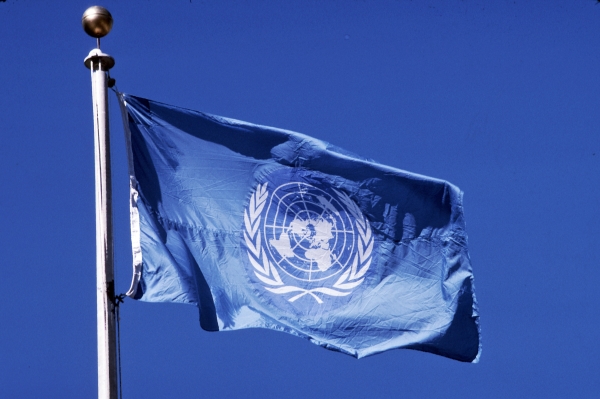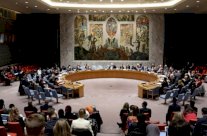The Convention on the Prevention and Punishment of the Crime of Genocide was adopted by the United Nations General Assembly on 9 December 1948 in its Resolution 260. The Convention entered into force on 12 January 1951. This instrument is the culmination of years of campaigning by lawyer Raphael Lemkin. The number of states that have ratified or acceded the convention is currently 143. The International Court of Justice declared in its Advisory Opinion on the Reservations to the Convention on the Prevention and Punishment of the Crime of Genocide of 1951 that the Convention was manifestly adopted for a purely humanitarian and civilizing purpose. It is indeed difficult to imagine a convention that might have this dual character to a greater degree, since its object on the one hand is to safeguard the very existence of certain human groups and on the other to confirm and endorse the most elementary principles of morality. In this same case, the Court underscored that the origins of the Convention show that it was the intention of the United Nations to condemn and punish genocide as ‘a crime under international law’ involving a denial of the right of existence of entire human groups, a denial which shocks the conscience of mankind and results in great losses to humanity, and which is contrary to moral law and the spirit and aims of the United Nations. The first consequence arising from this conception is that the principles underlying the Convention are principles which are recognized by civilized nations as binding on States, even without any conventional obligation. A second consequence is the universal character both of the condemnation of genocide and of the co-operation required ‘in order to liberate mankind from such an odious scourge’ (Preamble to the Convention). That conclusion was reaffirmed by the Court in the Judgment on Application of the Convention on the Prevention and Punishment of the Crime of Genocide (Bosnia and Herzegovina v. Serbia and Montenegro of 2007). In addition, the Court has made clear that the Genocide Convention contains obligations erga omnes. Finally, the Court has noted in the case on Armed Activities on the Territory of the Congo of 2002 that the prohibition of genocide has the character of a peremptory norm (jus cogens).
Article I provides that “the Contracting Parties confirm that genocide, whether committed in time of peace or in time of war, is a crime under international law”. The definition is followed by a series of acts representing serious violations of the right to life, and the physical or mental integrity of the members of the group. The Convention states that it is not just the acts of genocide themselves that are punishable, but also “conspiracy to commit genocide,” “direct and public incitement to commit genocide,” the “attempt to commit genocide” and “complicity in genocide.” It is the specific intention to destroy an identified group either “in whole or in part” that distinguishes the crime of genocide from a crime against humanity. In Article II, the Convention lists the acts which constitute the act of genocide. Although there is no disagreement between the Parties on the definition of “killing members of the group”, the Parties disagree on whether causing serious bodily or mental harm to members of the group must contribute to the destruction of the group, in whole or in part, in order to constitute genocide. The Court concludes that the serious bodily or mental harm must be such as to contribute to the physical or biological destruction of the group, in whole or in part and that rape and other acts of sexual violence are capable of constituting the act of genocide. The Parties also disagree on the meaning and scope of the notion of “causing serious mental harm to members of the group”. In the Court’s view, the persistent refusal of the competent authorities to provide relatives of individuals who disappeared in the context of an alleged genocide with information in their possession, which would enable the relatives to establish with certainty whether those individuals are dead, and if so, how they died, is capable of causing psychological suffering. Deliberate infliction on the group of conditions of life calculated to bring about its physical destruction in whole or in part covers methods of physical destruction, other than killing, whereby the perpetrator ultimately seeks the death of the members of the group. Such methods of destruction include notably deprivation of food, medical care, shelter or clothing, as well as lack of hygiene, systematic expulsion from homes, or exhaustion as a result of excessive work or physical exertion. The Parties disagree, however, on whether forced displacement should be characterized as “deliberately inflicting on the group conditions of life calculated to bring about its physical destruction in whole or in part”. The Court concludes that the intent that characterizes genocide is ‘to destroy, in whole or in part’ a particular group, and deportation or displacement of the members of a group, even if effected by force, is not necessarily equivalent to destruction of that group, nor is such destruction an automatic consequence of the displacement. Finally, the Court also considers that rape and other acts of sexual violence are capable of constituting the act of genocide provided that they are of kinds which prevent births within the group. In order for that to be the case, it is necessary that the circumstances of the commission of those acts, and their consequences, are such that the capacity of members of the group to procreate is affected. In June 1998, the General Assembly convened a conference in Rome, with the aim of finalizing the treaty to serve as the International Criminal Court's statute. On 17 July 1998, the Rome Statute of the International Criminal Court was adopted by a vote of 120 to 7, with 21 countries abstaining. Following 60 ratifications, the Rome Statute entered into force on 1 July 2002 and the International Criminal Court was formally established. The jurisdiction of the International Criminal Court shall be limited to the most serious crimes of concern to the international community as a whole. The Court has jurisdiction in accordance with this Statute with respect to the following crimes: the crime of genocide; crimes against humanity; war crimes and the crime of aggression. The term “war crimes” refers to serious breaches of international humanitarian law committed against civilians or enemy combatants during an international or domestic armed conflict, for which the perpetrators may be held criminally liable on an individual basis. Such crimes are derived primarily from the Geneva Conventions of 12 August 1949 and their Additional Protocols I and II of 1977, and the Hague Conventions of 1899 and 1907. Their most recent codification can be found in article 8 of the 1998 Rome Statute for the International Criminal Court (ICC). On the other hand, the definition of ‘crimes against humanity’ is codified in article 7 of the Rome Statute of the International Criminal Court (ICC). “The notion encompasses crimes such as murder, extermination, rape, persecution and all other inhumane acts of a similar character (wilfully causing great suffering, or serious injury to body or to mental or physical health), committed ‘as part of a widespread or systematic attack directed against any civilian population, with knowledge of the attack’.” Finally, in the past years the Human Rights Council has been consensually working on the prevention of genocide, by which the Council has repeatedly underlined the important role of the United Nations human rights system, including that of the Human Rights Council, the Office of the United Nations High Commissioner for Human Rights and relevant special procedures and treaty bodies in addressing the challenge of collating information on massive, serious and systematic violations of human rights, thereby contributing to a better understanding and early warning of complex situations that might lead to genocide. David Fernandez Puyana, PhD, LLM and MA |


















التعليقات